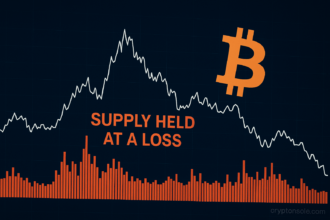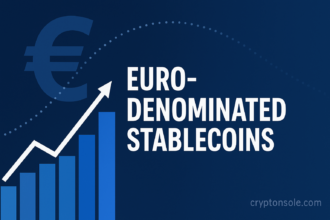The Ethereum staking infrastructure is witnessing a volatile transition that is not only affecting both the entry and exit validator queues to reach the new highs but also showing a trend where a mixture of profit-taking with fresh staking interest prevails. Along with the price of ETH that has risen significantly from its lowest in April, a recent optimistic tone from regulators has revealed the participation of Institutions in the market, the staking sector is a new shape being formed.
Exit Queue Hits 521,000 ETH – A 2024 Record
Onchain data from validatorqueue.com shows the Ethereum validator exit queue is now at 521,000 ETH that is roughly equivalent to $1.9 billion at current prices. This is the longest exit queue so far in 2024 and will like indicate that most of the validators are embarking on the road of unstaking.
The exit process, which normally takes a few days, has now been extended to an approximate time period of eight to nine days. The main reason is that the network’s capacity, which is limited, allows only a certain number of validators to go out during each epoch. Such congestion indicates a huge volume of withdrawals that began to manifest since July 16, most probably led by stakers who seek to convert their holdings into cash due to the recent price rally of Ethereum.
Entry Queue Also Climbs – Fresh Stakers Rush In
Even as a number of validators are leaving the network, there is a group of people that is going in the opposite direction going in. The entry queue has also expanded, and it is currently more than 359,500 ETH — which is worth roughly $1.3 billion. The current activation wait time is about six days, implying that there is still a strong and steady interest in becoming a part of Ethereum’s validator set.
This demand is mainly caused by a few influential events. The most significant thing is that the U.S. Securities and Exchange Commission (SEC) has made it clear that staking, on its own, is not a securities offering.
What Do Validators Do?
Ethereum validators are the most important players in the network’s proof-of-stake (PoS) consensus model. They decide the system’s integrity and security by proposing new blocks and validating others. A participant has to lock 32 ETH into the network if he wants to be a validator — which means staking his coins in return for yield and also helping the blockchain to work smoothly.
The network’s decentralization and resilience are proportional to the number of validators. However, a mass of exits could lead to a decrease in the short term of staking participation, but it may also be part of the cyclical nature and price-driven.
Price Rally Encourages Both Sides of the Queue
Ethereum has seen an epic 162% comeback from its April bottom, it recently has been around $3,667. This price explosion is pulling both validators along to the runway — some clicking the take-profit button, others jumping in. The latter is the source of the congestion at the tail-end of the validator queue.
The two-way flow thus underscores Ethereum’s transformation from a mere cryptocurrency to a bona fide investment asset. At the same time that individual stakers/accounts may be driven by market-timing ventures, institutional strategies are still being orchestrated through long-term regulatory signals and risk-adjusted yield expectations.
Institutional Players Make Moves
Corporate heavyweights have broadened their Ethereum pocket following the U.S. Securities and Exchange Commission’s (SEC) statement in May. BlackRock, for instance, made fresh Ethereum ETF filings which went beyond staking. On the other hand, SharpLink Gaming and BitMine Immersion, co-founder of Ethereum Joseph Lubin and analyst Thomas Lee’s backing, respectively, have launched ETH treasuries where the staking operation is at the heart of it all.
If we look from a different angle, these moves can be seen as signals of increasing confidence both in Ethereum as a network and as a particular asset class. By putting together staking operations, corporates can not only add to investor value but also create new revenue streams.
Staking Participation Hits All-Time High
As of July 22, approximately 29.4% of Ethereum’s total supply — or 36.39 million ETH — is staked. This represents an all-time high, up from 35 million ETH just over a month earlier. The trend underscores sustained interest in staking, even amid price volatility and shifting validator activity.
The demand for staking rewards, combined with Ethereum’s evolving regulatory landscape, suggests that validator queues — whether for entry or exit — may remain a feature of the network for the foreseeable future.
Conclusion
Ethereum’s validator ecosystem is in flux, reflecting both the cyclical nature of markets and structural developments in the broader crypto landscape. As profit-takers exit and new entrants stake in, the network continues to evolve, with staking remaining a central pillar of Ethereum’s long-term growth.
Also Read: PENGU Hits Record Volume, Token Jumps 20% – Is $0.05 Next?












